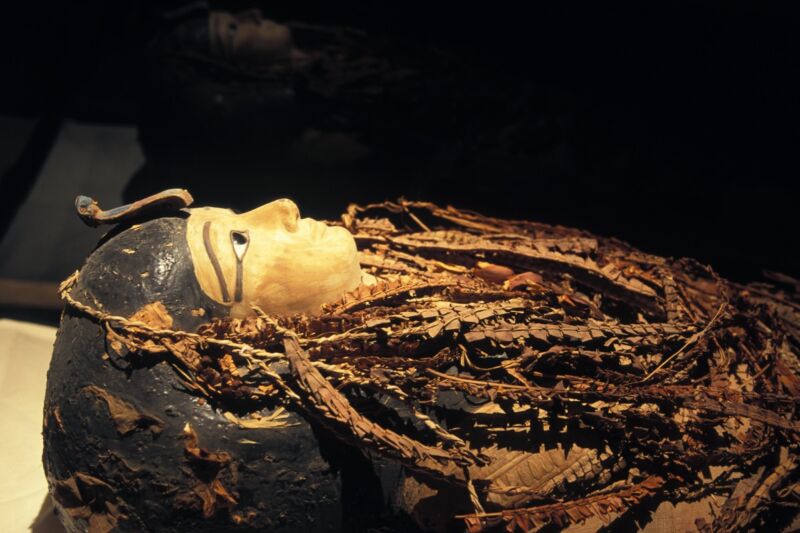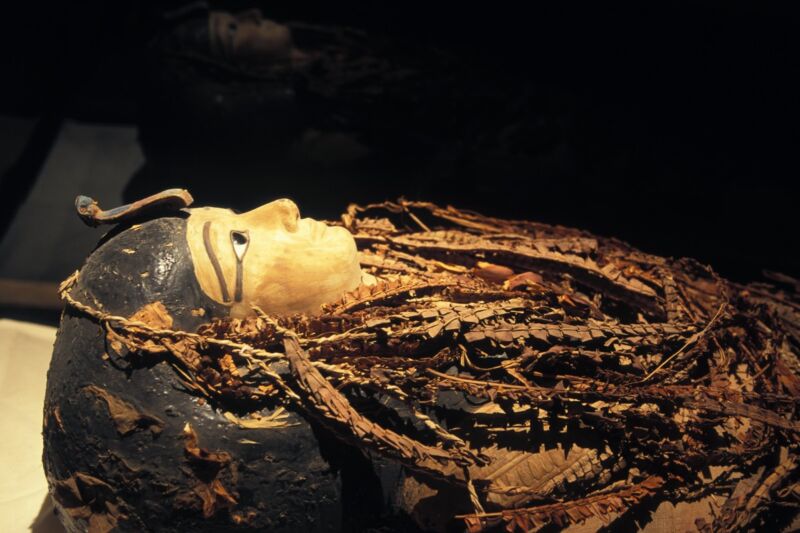
Enlarge / Royal mummy of Amenhotep I, the second pharaoh of the 18th dynasty,, at Cairo Museum, Egypt. (credit: Patrick Landmann/Getty Images)
Amenhotep I was an Egyptian pharaoh best known for building numerous temples and inspiring the formation of a funerary cult after his death. His mummy, first discovered in 1881, has never been opened, because conservators were reluctant to damage something that had survived in such pristine condition. Now, scientists have succeeded in “virtually unwrapping” the mummy of Amenhotep I, providing us with our first look inside, according to a paper published last week in the journal Frontiers in Medicine.
In the process, the authors disproved their own hypothesis that those who restored the mummy sometime during the 21st dynasty (1069 to 945 BCE) did so in order to reuse the royal burial equipment for later pharaohs. Instead, Amenhotep I’s mummy seems to have been lovingly restored after being damaged by tomb robbers.
“This fact that Amenhotep I’s mummy had never been unwrapped in modern times gave us a unique opportunity: not just to study how he had originally been mummified and buried, but also how he had been treated and reburied twice, centuries after his death, by High Priests of Amun,” said Sahar Saleem of Cairo University, the radiologist of the Egyptian Mummy Project, who co-authored the paper with Zahi Hawass, former minister of antiquities of Egypt. “By digitally unwrapping the mummy and ‘peeling off’ its virtual layers—the facemask, the bandages, and the mummy itself—we could study this well-preserved pharaoh in unprecedented detail.”





